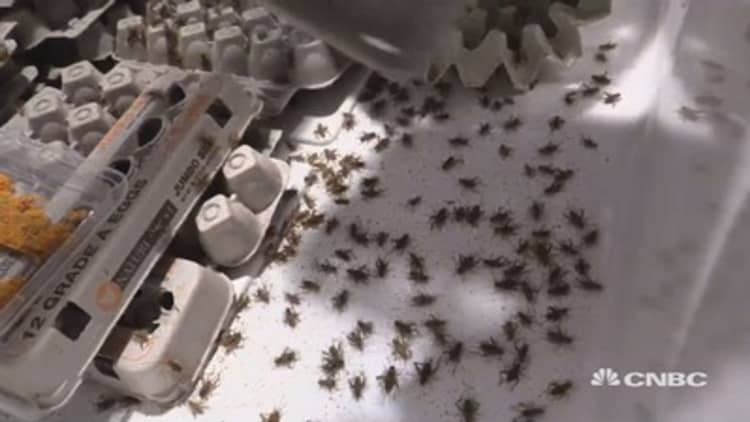Beekeepers are seeing unusually high numbers of their bees die this year, prompting concerns about the health of crops that depend on the insects, and about the future of the beekeeping industry in America itself.
Widespread deaths among bees, known as Colony Collapse Disorder, were first reported about a decade ago, but the problem has not diminished and may have been especially bad recently.
Beekeepers across the United States lost roughly 40 percent of their colonies from April 2014 to April 2015, according to an annual survey conducted by the Bee Informed Partnership and Apiary Inspectors of America, with funding from the U.S. Department of Agriculture. (Tweet This)
That's the second highest percentage loss since researchers began counting summer and winter season losses five years ago.
Read MoreThe latest battle in the war for California water
The group found that large numbers of bees are dying during the summer months, when conditions should be more favorable. One in 4 colonies is now dying during summer, which was unheard of several years ago, according to the results.
The total number of bee colonies in the United States declined from 6 million during the 1940s to 2.5 million about 10 years ago, but it has remained relatively stable since then. The most recent numbers place the total estimate at 2.74 million.
Beekeepers expect to lose a small number of colonies every year, especially in winter months when food supplies are scarce. Beekeepers can replace those losses by splitting a healthy colony of bees in half and buying a new queen to start a new colony.
We are not worried bees are going to go extinct. What we are worried about is that the commercial beekeeper won't be able to stay in business. Losing this number of colonies every year is very financially hard, and it is difficult to replace these guys, because these are the last migratory farmers in America.Dennis vanEngelsdorpresearcher, University of Maryland
But the costs of maintaining colonies have mushroomed.
Farmers who lose 40 percent of their colonies have to split nearly every remaining colony just to maintain their total number.
Each new queen bee costs about $20, sometimes more. Beekeepers suffer productivity losses while they're splitting colonies. And weaker, smaller colonies do not command the same prices among the farmers who pay keepers for pollination services.
"You aren't going to be able to get as much money for pollination rental, the colony won't make as much honey, so you are losing productivity," said Dennis vanEngelsdorp, a bee scientist from the University of Maryland who was involved in the research.
Read MoreLandowners square off in California water wars
That has driven up prices for pollination. The price to use a healthy colony for pollination used to run about $70. Now it has more than doubled to $175, vanEngelsdorp said.
No one is certain what is causing these losses, but three factors or a combination of them seem likely: parasites, pesticides and lack of adequate food.
For backyard beekeepers—generally noncommercial ventures of fewer than 50 bee colonies—the parasitic varroa mite has taken a toll.
Many backyard beekeepers struck with varroa mite infestations are not adequately treating them, vanEngelsdorp said. In some cases, this is well-intentioned. Some beekeepers hope they can breed a colony that builds a natural resistance to the mite. That may not be possible, but in the meantime, infected bees spread the mites to other colonies.
Commercial beekeepers are treating their colonies, but some of the pesticides they use to attack the mite may either be ineffective or may have other negative effects on bee colony health. Pesticides that other farmers use on crops could also be having an effect, he said.

Finally, bees may be struggling to find adequate food sources out on the land.
"We are certainly seeing a lot changes on the landscape," vanEngelsdorp said. "Where once there was a lot of land with meadows of flowering plants and trees, we have seen a lot of that land get plowed under for corn and soybean."
Read MoreSaving America's 'worst city for business'
Backyard beekeepers comprise 95 percent of beekeepers in the United States, but they manage only about 5 percent of the bees. The relatively small number of commercial beekeepers make up the rest.
"We are not worried bees are going to go extinct," vanEngelsdorp said. "What we are worried about is that the commercial beekeeper won't be able to stay in business. Losing this number of colonies every year is very financially hard, and it is difficult to replace these guys, because these are the last migratory farmers in America."


